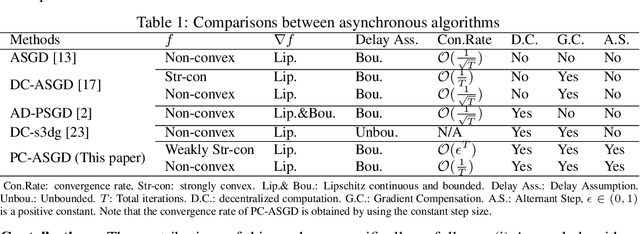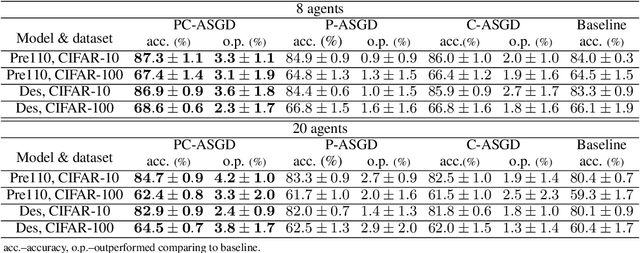Dongxiang Jiang
Fine-Tuning Pre-trained Large Time Series Models for Prediction of Wind Turbine SCADA Data
Nov 30, 2024



Abstract:The remarkable achievements of large models in the fields of natural language processing (NLP) and computer vision (CV) have sparked interest in their application to time series forecasting within industrial contexts. This paper explores the application of a pre-trained large time series model, Timer, which was initially trained on a wide range of time series data from multiple domains, in the prediction of Supervisory Control and Data Acquisition (SCADA) data collected from wind turbines. The model was fine-tuned on SCADA datasets sourced from two wind farms, which exhibited differing characteristics, and its accuracy was subsequently evaluated. Additionally, the impact of data volume was studied to evaluate the few-shot ability of the Timer. Finally, an application study on one-turbine fine-tuning for whole-plant prediction was implemented where both few-shot and cross-turbine generalization capacity is required. The results reveal that the pre-trained large model does not consistently outperform other baseline models in terms of prediction accuracy whenever the data is abundant or not, but demonstrates superior performance in the application study. This result underscores the distinctive advantages of the pre-trained large time series model in facilitating swift deployment.
Domain-specific ReAct for physics-integrated iterative modeling: A case study of LLM agents for gas path analysis of gas turbines
Jun 01, 2024



Abstract:This study explores the application of large language models (LLMs) with callable tools in energy and power engineering domain, focusing on gas path analysis of gas turbines. We developed a dual-agent tool-calling process to integrate expert knowledge, predefined tools, and LLM reasoning. We evaluated various LLMs, including LLama3, Qwen1.5 and GPT. Smaller models struggled with tool usage and parameter extraction, while larger models demonstrated favorable capabilities. All models faced challenges with complex, multi-component problems. Based on the test results, we infer that LLMs with nearly 100 billion parameters could meet professional scenario requirements with fine-tuning and advanced prompt design. Continued development are likely to enhance their accuracy and effectiveness, paving the way for more robust AI-driven solutions.
Asynchronous Training Schemes in Distributed Learning with Time Delay
Aug 28, 2022



Abstract:In the context of distributed deep learning, the issue of stale weights or gradients could result in poor algorithmic performance. This issue is usually tackled by delay tolerant algorithms with some mild assumptions on the objective functions and step sizes. In this paper, we propose a different approach to develop a new algorithm, called $\textbf{P}$redicting $\textbf{C}$lipping $\textbf{A}$synchronous $\textbf{S}$tochastic $\textbf{G}$radient $\textbf{D}$escent (aka, PC-ASGD). Specifically, PC-ASGD has two steps - the $\textit{predicting step}$ leverages the gradient prediction using Taylor expansion to reduce the staleness of the outdated weights while the $\textit{clipping step}$ selectively drops the outdated weights to alleviate their negative effects. A tradeoff parameter is introduced to balance the effects between these two steps. Theoretically, we present the convergence rate considering the effects of delay of the proposed algorithm with constant step size when the smooth objective functions are weakly strongly-convex and nonconvex. One practical variant of PC-ASGD is also proposed by adopting a condition to help with the determination of the tradeoff parameter. For empirical validation, we demonstrate the performance of the algorithm with two deep neural network architectures on two benchmark datasets.
Deep Transfer Network with Joint Distribution Adaptation: A New Intelligent Fault Diagnosis Framework for Industry Application
Apr 18, 2018



Abstract:In recent years, an increasing popularity of deep learning model for intelligent condition monitoring and diagnosis as well as prognostics used for mechanical systems and structures has been observed. In the previous studies, however, a major assumption accepted by default, is that the training and testing data are taking from same feature distribution. Unfortunately, this assumption is mostly invalid in real application, resulting in a certain lack of applicability for the traditional diagnosis approaches. Inspired by the idea of transfer learning that leverages the knowledge learnt from rich labeled data in source domain to facilitate diagnosing a new but similar target task, a new intelligent fault diagnosis framework, i.e., deep transfer network (DTN), which generalizes deep learning model to domain adaptation scenario, is proposed in this paper. By extending the marginal distribution adaptation (MDA) to joint distribution adaptation (JDA), the proposed framework can exploit the discrimination structures associated with the labeled data in source domain to adapt the conditional distribution of unlabeled target data, and thus guarantee a more accurate distribution matching. Extensive empirical evaluations on three fault datasets validate the applicability and practicability of DTN, while achieving many state-of-the-art transfer results in terms of diverse operating conditions, fault severities and fault types.
 Add to Chrome
Add to Chrome Add to Firefox
Add to Firefox Add to Edge
Add to Edge